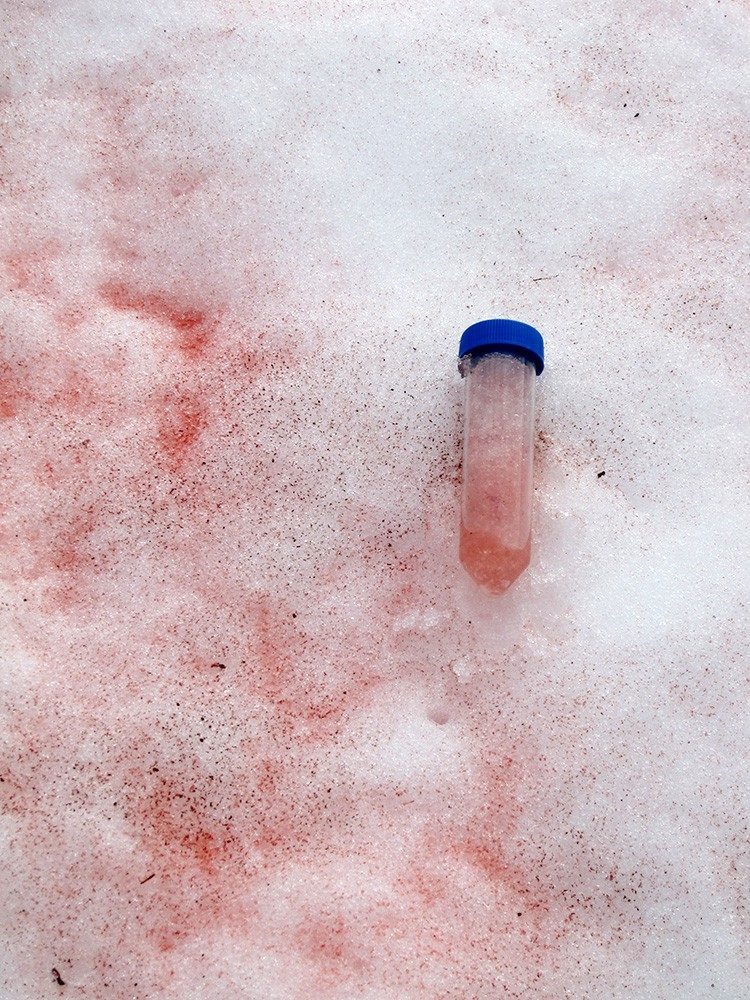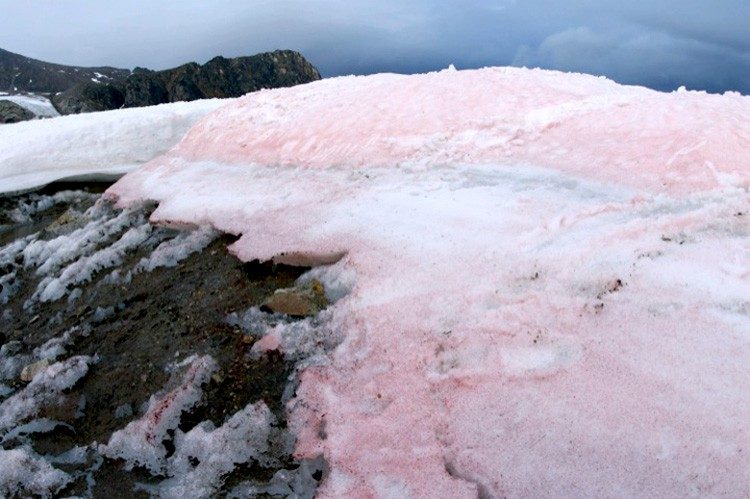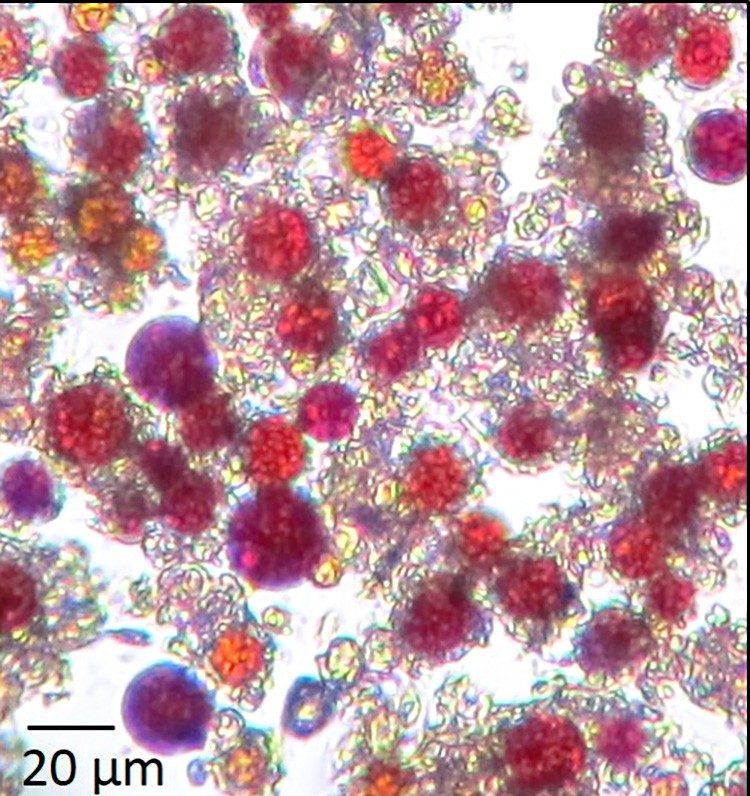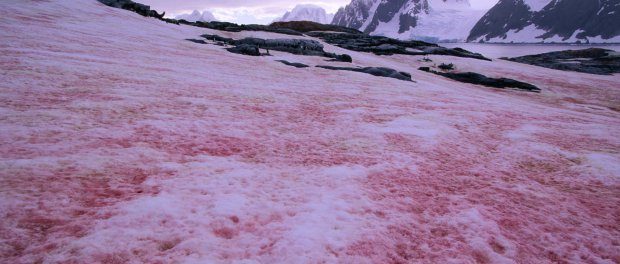In order for them to form visible blooms and increase the melting of the snow and ice, they just need the right conditions, which at a minimum involve basic nutrients and melting. Right now, the availability of liquid water from snow and ice becomes higher, favoring the growth of snow and ice algae.
This is an increasing problem in the Arctic, Alpine, and Himalayan glaciers. Blooms of red snow and brown ice are turning up in Antarctica, too.
Martyn Tranter is a polar biogeochemist at the University of Bristol in the U.K. and leader of "Black and Bloom," a multi-year project that aims to understand how and why the Greenland ice sheet is melting. "Warming temperatures alone cannot explain the increased melt. So it's become crucial to understand all the drivers in the ice melting," he says.
Comment: Overall, temperatures are actually falling, but that doesn't exclude some warming coming from below.
One of those drivers, he believes, is the darkening caused by the algal blooms that quilt the snow-strewn Greenland ice every summer.
These ice algae are photosynthetic organisms that produce biological sunscreen molecules to protect them from the sun, which in the Arctic in summer stays above the horizon up to 24 hours a day. The darker surface lowers its ability to reflect the sunlight back into space, and that results in more light absorbed and more melting.
As algae spreads over larger areas of the ice sheet, the effect will be compounded, leading to even more melting. A recent study found that algal blooms can contribute as much as 13 percent more ice melt over a season.
More heat means more meltwater and yet a larger area where algae can grow, causing more ice to get darker and more of it to melt.
The Greenland ice sheet is the biggest piece of ice in the Northern Hemisphere. Each year, it loses 270 billion tons of ice, adding a fraction of an inch to global sea levels. The amount of melting is speeding up year by year, and if the entire ice sheet melted, it would add 20 feet to sea levels.
Scientists are worried that if it melts more quickly its effects will be felt in coastal areas from New York to Shanghai to Miami, as well as in low-lying areas like Bangladesh and Indonesia.
Comment: The theorised problem of sea level rise isn't quite happening in the way scientists had predicted:
- Venice water levels lowest since records began - and it's sinking (PHOTOS)
- 'Sinking' Pacific Island is actually growing

Just beneath the ice surface there are red algae that turn the ice pinkish. Are probably some other things that we are not aware of yet...
Did you know? There are also pink beaches around the world.
In this movie the snow is more looking like black:
Source: National Geographic - Mysterious Microbes Turning Polar Ice Pink, Speeding Up Melt






Comment: What is changing in our environment to cause this sudden increase in algae blooms?
- Pink snow spotted in the Apennine mountains, Tuscany
- Lake turns bright pink in Melbourne, Australia
- Mysterious, massive and deadly algae bloom 'whirlpool' discovered in the Baltic Sea
- Baltic Sea is up to 3-4 °C warmer than average right now
Also check out SOTTs monthly documentary: SOTT Earth Changes Summary - August 2018: Extreme Weather, Planetary Upheaval, Meteor Fireballs